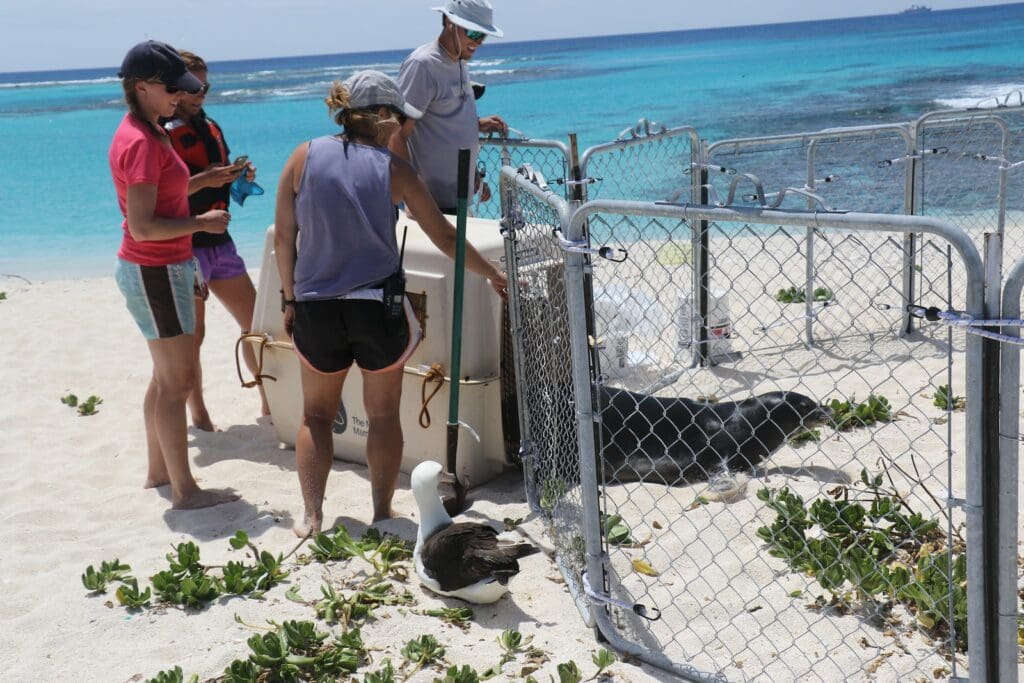
Animal rehabilitation is the process of helping animals that have been injured, orphaned, or otherwise incapacitated to recover and return to their natural habitat. Zoos have been playing an increasingly important role in this process, providing a safe and secure environment for animals to recover and receive medical attention. Many zoos have also been working to develop enrichment programs to combat boredom and promote natural behaviors, which can help animals recover more quickly and successfully.
The Purpose of Zoos
Zoos have been around for centuries, with the first modern zoo opening in 1752 in Vienna, Austria. The purpose of zoos has evolved over time, from being a place for entertainment and recreation to being a place for education and conservation.
One of the primary purposes of zoos is to provide a safe and secure environment for animals. Many animals in zoos have been rescued from the wild due to injury, illness, or loss of habitat. Zoos provide these animals with medical care, shelter, and food, which they may not have received in the wild.
Zoos also play an important role in animal rehabilitation. Many animals that come to zoos have been injured or orphaned in the wild. Zoos work with wildlife rehabilitation centers to provide medical care and rehabilitation to these animals. Once the animals are healthy, they are often released back into the wild.
In addition to animal welfare, zoos also serve as educational institutions. Visitors to zoos can learn about different species of animals, their habitats, and their behaviors. Zoos often have educational programs for children, such as zoo camps and school field trips, which teach children about the importance of conservation and animal welfare.
Finally, zoos provide a recreational space for visitors. Families can enjoy a day out at the zoo, observing and learning about different animals. Zoos often have play areas for children, food and drink vendors, and gift shops.
Overall, the purpose of zoos is multi-faceted, encompassing animal welfare, conservation, education, and recreation. While there are criticisms of zoos, such as concerns about animal welfare and captivity, zoos continue to play an important role in society as institutions for animal rehabilitation, education, and conservation.
Zoos and Wildlife Rehabilitation
Zoos play a crucial role in animal rehabilitation, particularly in the rescue and rehabilitation of injured, orphaned, and sick animals. They provide a safe and secure environment for animals to recover from their injuries and receive the necessary care and assistance to improve their chances of survival.
Rescue and Rehabilitation
Zoos work closely with licensed rehabilitators and wildlife rehabilitation centers to provide assistance in the rescue and rehabilitation of animals. When an injured or orphaned animal is found, the licensed rehabilitator or wildlife rehabilitation center will assess the animal’s condition and determine the best course of action. In some cases, the animal may be brought to a zoo for further care and treatment.
Zoos have skilled staff and specialized facilities that can provide the necessary care and handling required for injured animals. They have access to veterinary care, specialized diets, and the ability to provide the animal with a safe and secure environment. Zoos also have the resources to provide long-term care for animals that cannot be released back into the wild.
Release and Monitoring
Once the animal has recovered, the next step is to release it back into the wild. Zoos work closely with wildlife rehabilitation centers to ensure that the animal is released in an appropriate location and has the best chance of survival.
Zoos also play a crucial role in monitoring animals that have been released back into the wild. They work with researchers to track the animal’s movements and behavior to determine if the animal is adapting well to its new environment. This information can be used to improve future rehabilitation efforts and better understand the needs of wild animals.
Overall, zoos are an essential part of the animal rescue and rehabilitation process. They provide a safe and secure environment for injured and orphaned animals to recover and receive the necessary care and assistance to improve their chances of survival. Zoos work closely with licensed rehabilitators and wildlife rehabilitation centers to ensure that animals are returned to the wild when possible and monitored to ensure their long-term success.
Role of Staff and Resources
Zoos play a crucial role in animal rehabilitation, and this is only possible with the help of dedicated staff and resources. The staff at zoos includes keepers, veterinarians, and management personnel, who work tirelessly to ensure that the animals receive the best care possible.
Training and Education
The staff at zoos undergoes extensive training and education to ensure that they are equipped to handle the animals under their care. This includes training on animal behavior, nutrition, and health care. The training also includes learning about the specific needs of each animal species, which is essential for providing appropriate care.
Healthcare and Maintenance
Health care is a critical aspect of animal rehabilitation in zoos. The staff at zoos works closely with veterinarians to ensure that the animals receive proper medical attention. This includes regular check-ups, vaccinations, and treatment for any illnesses or injuries.
Zoos also require significant resources to provide the necessary care for the animals. Resources include animal enclosures, food, medical equipment, and medications. Zoos must also have the necessary funding to maintain and upgrade these resources regularly.
In conclusion, the role of staff and resources in animal rehabilitation at zoos is critical. The staff undergoes extensive training to ensure that they can provide the best care possible, and the resources are necessary to maintain the animals’ health and well-being. Zoos must continue to invest in their staff and resources to ensure that they can provide the best possible care to the animals under their care.
Zoos and Conservation Efforts
Zoos play a crucial role in conservation efforts through their various programs and initiatives. In particular, they have been instrumental in protecting endangered species and preventing their extinction. Zoos have also been actively involved in breeding and propagation programs to increase the population of endangered animals.
Endangered Species Protection
The International Union for Conservation of Nature (IUCN) estimates that more than 27,000 species are threatened with extinction. Zoos have taken on the responsibility of protecting these endangered species by creating safe habitats and providing necessary care. They also work with government agencies such as the U.S. Fish and Wildlife Service to promote conservation efforts.
Zoos have been successful in protecting endangered species such as the black-footed ferret, California condor, and red wolf. These animals were once on the brink of extinction, but thanks to the efforts of zoos, their populations have increased significantly.
Breeding and Propagation
Zoos also play a crucial role in breeding and propagation programs. Many endangered animals have low breeding rates, making it difficult for their populations to recover. Zoos have developed breeding programs to increase the population of endangered animals and prevent their extinction.
Zoos use various techniques such as artificial insemination, embryo transfer, and genetic analysis to improve breeding success rates. These programs have been successful in increasing the population of endangered animals such as the giant panda, Siberian tiger, and African elephant.
In conclusion, zoos play a vital role in conservation efforts through their various programs and initiatives. They have been successful in protecting endangered species and increasing their populations through breeding and propagation programs. Zoos will continue to play an essential role in conservation efforts in the future.

Zoos as Educational Platforms
Zoos have long been recognized as educational platforms that play a crucial role in educating visitors about the importance of biodiversity conservation. According to a study published in the Journal of Sustainable Tourism, zoo tourism can be an effective tool for promoting biodiversity conservation and education through interpretation and education programs. Zoos offer visitors the opportunity to learn about different animal species, their habitats, and the importance of conservation efforts.
Education is a key component of the zoo experience, and zoos have evolved to become more than just places to view animals. They now offer a wide range of educational activities, including guided tours, interactive exhibits, and educational programs. These programs are designed to teach visitors about the natural world and inspire them to take action to protect it.
One of the primary goals of zoos is to provide visitors with a better understanding of the natural world and the role that humans play in it. By educating visitors about the importance of conservation and the impact of human activities on the environment, zoos can help to promote a culture of conservation and inspire visitors to take action to protect the natural world.
In addition to educating visitors, zoos also play an important role in research and conservation efforts. Many zoos have dedicated research programs that focus on understanding animal behavior, genetics, and ecology. They also participate in conservation efforts, including breeding programs, habitat restoration, and public education campaigns.
Overall, zoos serve as important educational platforms that can help to promote a culture of conservation and inspire visitors to take action to protect the natural world. Through their educational programs, research efforts, and conservation initiatives, zoos are making a significant contribution to the preservation of biodiversity and the protection of our planet.
Animal Welfare in Zoos
Zoos play an essential role in the conservation of endangered species, but they also have a responsibility to ensure the welfare of the animals in their care. Animal welfare in zoos is a complex issue that involves providing appropriate living conditions, nutrition, and medical care, as well as addressing the animals’ behavioral and psychological needs.
Enrichment and Stereotypic Behaviors
Enrichment is a critical aspect of animal welfare in zoos. It refers to the provision of stimuli that promote the animals’ physical and mental well-being, such as toys, puzzles, and opportunities for social interaction.
Enrichment can help prevent stereotypic behaviors, which are repetitive, abnormal behaviors that result from the animals’ inability to cope with their environment. Stereotypic behaviors can be an indicator of poor welfare and can lead to health problems and reduced life expectancy.
Zoos must provide appropriate enrichment for the animals in their care and regularly assess its effectiveness. The type and amount of enrichment provided should vary according to the species’ needs and preferences.
Animal Rescue and Care
Many animals in zoos are rescued or displaced from their natural habitat due to human activities such as deforestation, habitat destruction, and poaching. Zoos play an important role in providing care and rehabilitation to these animals. They often work with conservation organizations and government agencies to rescue and care for displaced animals.
Zoos must ensure that the animals receive appropriate medical care and rehabilitation to prepare them for release back into the wild if possible. In some cases, animals may not be able to return to the wild due to health or behavioral issues, and zoos must provide long-term care and appropriate living conditions.
In conclusion, animal welfare in zoos is a complex issue that requires careful consideration of the animals’ physical, behavioral, and psychological needs. Zoos must provide appropriate enrichment, prevent stereotypic behaviors, and provide care and rehabilitation to displaced animals. By prioritizing animal welfare, zoos can contribute to the conservation of endangered species while also providing a high standard of care for the animals in their care.
Zoos and Government Regulations
Zoos are subject to a range of government regulations that aim to ensure the welfare of animals and protect the public. This section will discuss the permits and licensing required for zoos and the regulatory authorities that enforce these regulations.
Permits, Licensing & Regulatory Authorities
To operate a zoo, permits and licenses are required from various regulatory bodies. To ensure the highest standards of animal care and public safety, zoos operate under strict regulations. Some of the regulatory authorities for zoos are:
- USDA: Oversees the Animal Welfare Act, setting minimum care standards for animals. Zoos must be licensed by the USDA and undergo regular inspections.
- USFWS: Manages the Endangered Species Act and Migratory Bird Treaty Act. Zoos housing or transporting endangered species or migratory birds need specific permits.
- AZA: A non-governmental body offering prestigious accreditation, ensuring zoos meet top-notch standards in animal care, conservation, and education.
- State & Local Authorities: Each state and locality may have additional regulations on animal welfare, veterinary care, and facility standards.
- CITES: An international treaty, but crucial for U.S. zoos involved in international animal transport, ensuring the trade doesn’t threaten species’ survival.
- CDC: Regulates animal importation to the U.S., ensuring no threat to human health.
In summary, zoos are subject to a range of government regulations that aim to ensure the welfare of animals and protect the public. Permits and licenses are required from regulatory bodies, and regulatory authorities enforce these regulations to ensure compliance.
The Future of Zoos
As we move into the future, the role of zoos in animal rehabilitation will continue to be an important one. With advancements in technology and research, zoos will be able to provide even better care for the animals in their care.
Zoos will continue to play a critical role in educating the public about conservation efforts and the importance of protecting wildlife. By providing opportunities for visitors to see and learn about animals up close, zoos can inspire a new generation of conservationists.
In order to continue their important work, zoos will rely on the support of donations from the public. These donations will help fund research and conservation efforts, as well as provide for the care and well-being of the animals in their care.
Zoo professionals will continue to work tirelessly to provide the best possible care for the animals in their care. They will continue to collaborate with other zoos and conservation organizations to share knowledge and best practices, and to work together to protect endangered species.
Overall, the future of zoos looks bright. With continued support from the public and advancements in technology and research, zoos will be able to play an even more important role in animal rehabilitation and conservation efforts.






